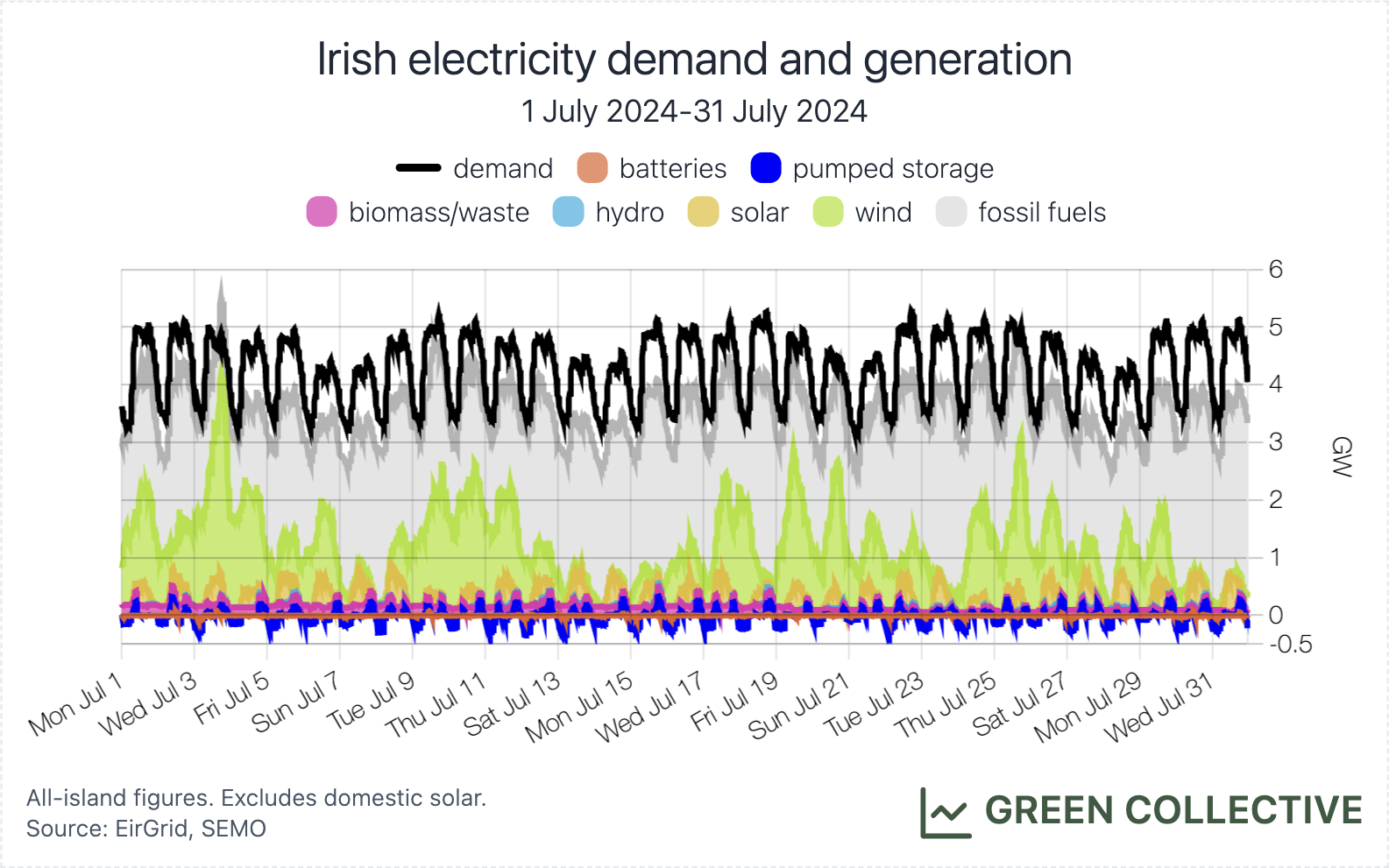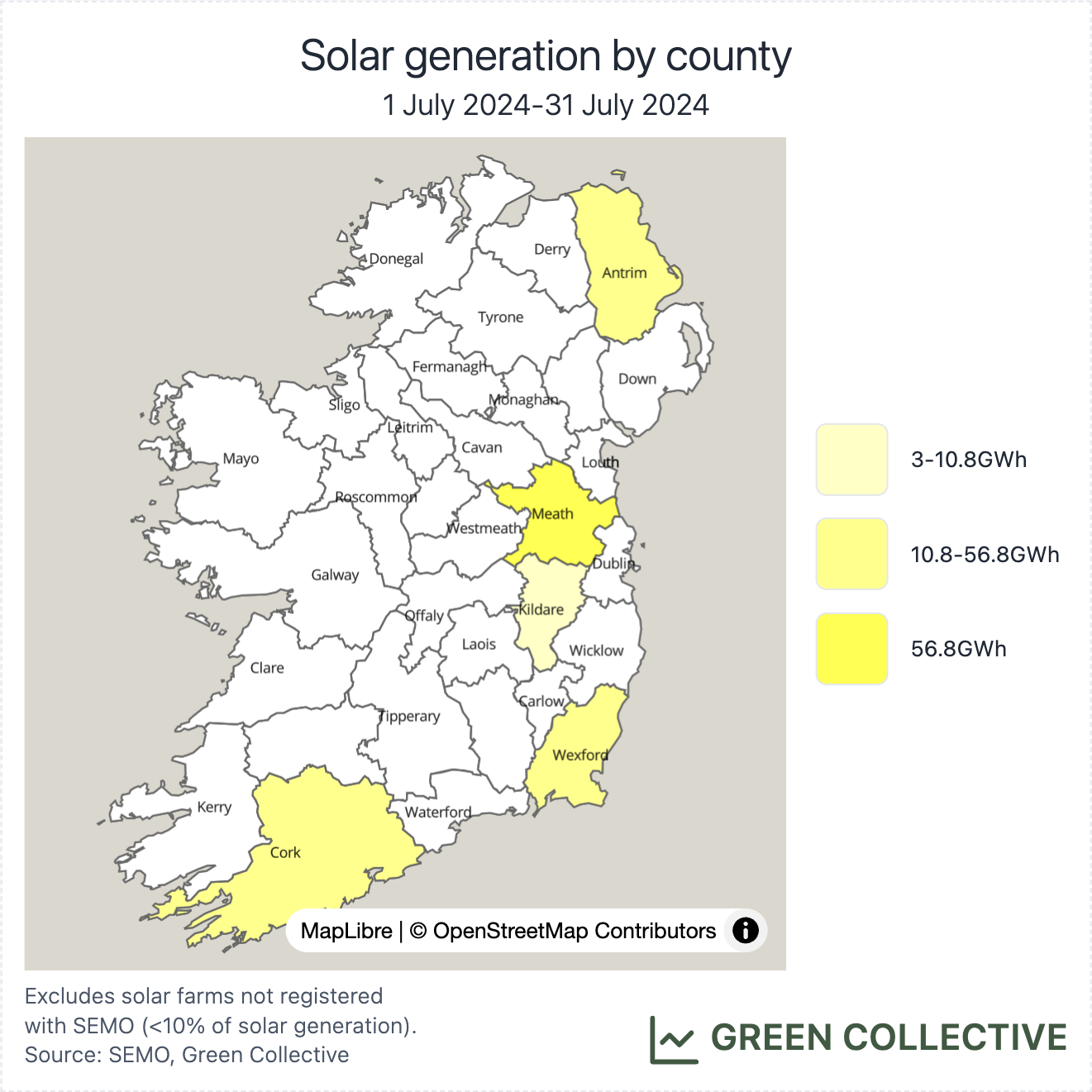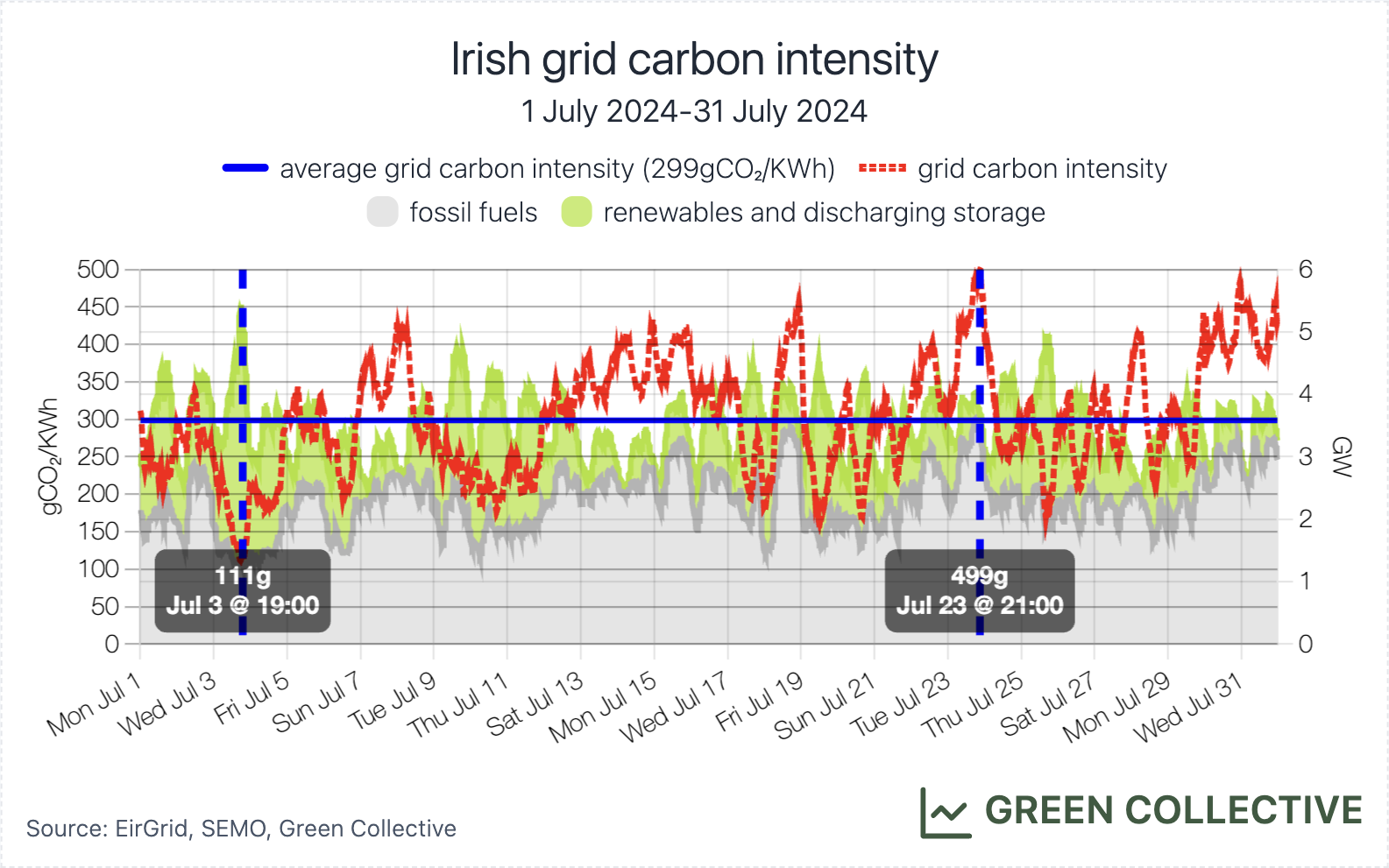Note: This article was updated and corrected August 29 2024 to incorporate utility-scale solar SCADA data from Eirgrid along with our own comparison of this SCADA data against market data. More details on this are in the "solar" section, below.
Summary
Electricity from renewable generation and discharging storage met 28.7% of Ireland’s (all-island) electricity demand during July 2024:
- 20.6% wind
- 0.3% hydro
- 2.9% biomass/waste
- 3.9% solar
- 0.9% discharging pumped storage
- <0.1% discharging batteries
885GWh of renewable generation was the lowest monthly total so far in 2024 and well below July 2023's record of 1.2TWh, although it was the third highest July monthly total yet seen. In addition, we saw the highest peak output yet for renewables in a July month: 3985MW, on the afternoon of July 3 when wind output reached an all-time July high (see below).
Fossil fuel generation equalled 54% of demand, the second-highest monthly share this year after May's 56.1%. Although this was a lower share than is typical for a July month in recent years, it is significantly up from July 2023's 49.5%.
So far in 2024, renewable generation has equalled 39.1% of electricity demand.
Exhibit 1: All-island demand met by different sources, July 2024

Solar
124.9GWh of all-island utility-scale solar generation during July 2024 was the most yet seen in any month in Ireland. This was equivalent to 3.9% of all-island electricity demand. Owing to higher demand during July, this works out to almost exactly the same percentage of demand fulfilled by June's 119.2GWh. This is the fourth month in a row that Irish solar has set a new record.
Note: In early August, Eirgrid reported a new record for peak solar output of 733MW on July 31. Because SEMO's market data reports suggested no record, we started investigation. Our conclusion is that although Eirgrid's reports are based on private 1-minute SCADA readings and may include momentary highs and lows that have been averaged out in the public 15-minute SCADA data on which we and others rely, there has undoubtedly been a number of issues with Eirgrid's SCADA solar figures during 2024. Although we had a theory about what occurred and were able to successfully calibrate our figures against the market data relatively quickly, a number of inconsistencies in Eirgrid's recent press releases further complicated our efforts and these are the main reason we initially missed this month's solar generation record. We believe the correct figures for Republic of Ireland solar generation during June and July are 104.4GWh and 110.9GWh, respectively. This is definitely a record for July, as reported by Eirgrid, albeit with what we believe to be an incorrect figure. However, we believe solar output on July 31 in fact peaked at 642MW and so continue to believe that the all-time peak solar output is 681MW, on June 23. We have posted some details behind our reasoning on Twitter here and here.
County Meath was home to approximately 50% of the month's solar generation and it remains the largest producer of solar by some margin, halting a fall in recent months noted in our June report. Meath produced a little over twice as much from solar as the next highest county, Wexford.
Exhibit 2: Solar generation by county, July 2024

Wind
656GWh of wind power was equivalent to 20.6% of all-island electricity demand. This is about normal for this time of year, although very much lower than July 2023's 995GWh, or 32.5% of demand (both figures all-time highs for July).
However, there were some strong winds and July 3 saw wind output rise to 3588MW which was a record high output for a July month.
Exhibit 3: All-island July wind generation, 2014-2024

Carbon Emissions
We estimate that for each KWh of electricity generated in July the Irish grid emitted between between 111g and 499g of CO2, for an average of 298gCO2/kWh.
This was the highest monthly average so far in 2024. July was also the first month in 2024 during which grid carbon intensity did not fall, year-on-year, since 2023. We can attribute this partly to an unusually high level of coal and oil generation towards the end of the month. With coal and oil generation reaching almost 900MW during peak load on July 23, grid carbon intensity rose to 499gCO2/kWh: the highest level seen on the Irish grid for almost 18 months.
So far in 2024, the average carbon intensity of the grid is 244gCO2/kWh.
Exhibit 4: All-island grid-carbon intensity, July 2024
